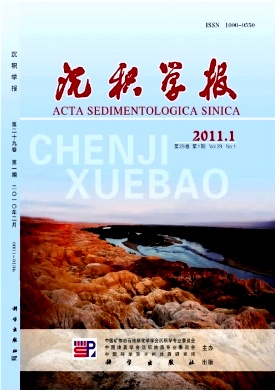Deposition and Reservoir Characteristics of Terminal Fan in Kongdian Formation of Huimin Depression
- Received Date: 1900-01-01
- Rev Recd Date: 1900-01-01
- Publish Date: 2011-02-10
-
Key words:
- terminal fan /
- diagenesis /
- reservoir quality /
- diagenetic lithofacies
Abstract: Sedimentary facies of Kongdian sandstones is terminal fan. Middle zone is the main part of the tripartite terminal fan which can be divided into distributary channel, overbank and mudflat according to observation and description of cores combined with the numerous data of seismic. The sandstones type of Kongdian Formation are of finemedium grained arkose and lithic arkose. Terminal fan sandstone has undergone many types of diagenesis. Authigenic minerals in Kongdian reservoir include clay minerals, carbonate, quartz, feldspar and so on. Based on the study of burial history, the diagenetic stage of Kongdian Formation is in A period of mesodiagenesis. Reservoir quality of terminal fan in Kongdian Formation is mainly controlled by sandbody microfacies and diagenesis. Sedimentary microfacies resolves reservoir's original physical property, while diagenesis dominates final status of sandstone reservoir. There exists five diagenetic lithofacies in Kongdian sandstone, for example plastic composition dissolution lithofacies, chlorite gasket lithofacies, carbonate cementation lithofacies, compaction and filling lithofacies, quartz overgrowth lithofacies and so on. Diagenetic lithofacies is comprehensive reflection of diagenetic change and reservoir evolution of different microfacies sand. Distributary channel sandstone in connection with plastic composition dissolution or chlorite coating lithofacies is usually nice hydrocarbon pay bed, whereas overbank sandstone related with carbonate cementation or compaction and filling lithofacies is often low permeability layer. Terminal fan reservoir shows facies controlled feature.
| Citation: | ZHANG Jinliang. Deposition and Reservoir Characteristics of Terminal Fan in Kongdian Formation of Huimin Depression[J]. Acta Sedimentologica Sinica, 2011, 29(1): 1-13. |






 DownLoad:
DownLoad: